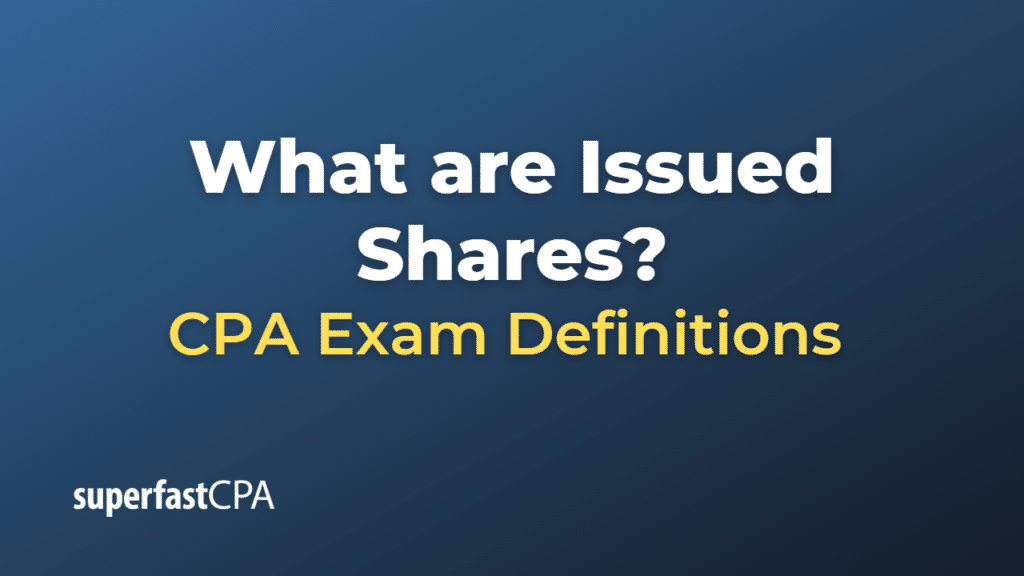Issued Shares
Issued shares are the shares of a corporation’s stock that have been sold and are currently held by shareholders. These shares include both public investors and insiders (such as executives or employees who have received shares as part of their compensation).
Here are a few key points to understand about issued shares:
- Issued shares are part of a company’s authorized shares: A corporation cannot issue more shares than its authorized share capital, which is the maximum number of shares that it’s allowed to issue as stated in its corporate charter.
- Not all authorized shares need to be issued: A company can choose to issue only a portion of its authorized shares, retaining the rest for future use, such as for raising additional capital, employee stock options, or other corporate purposes.
- Issued shares can be either outstanding or treasury shares: Shares that have been issued and are currently held by shareholders are known as outstanding shares. If a company buys back its own shares, those shares become treasury shares but are still considered issued shares. They are not, however, considered outstanding because they are owned by the company itself and not by external investors.
The number of a company’s issued shares can have an impact on certain key financial metrics, such as earnings per share (EPS), because these metrics are often calculated based on the number of outstanding shares.
Example of Issued Shares
Let’s take a hypothetical technology company, XYZ Tech, as an example to explain the concept of issued shares:
- Authorized Shares: Let’s assume that XYZ Tech’s corporate charter authorizes the company to issue up to 1,000,000 shares of common stock.
- Issued Shares: XYZ Tech decides to initially issue 500,000 shares during its Initial Public Offering (IPO). These 500,000 shares are now considered as the company’s issued shares.
- Outstanding Shares and Treasury Shares: Suppose that after a few years of operation, XYZ Tech decides to buy back 50,000 shares from the open market as part of a share repurchase program. Now, XYZ Tech has 450,000 outstanding shares (500,000 originally issued shares – 50,000 repurchased shares) and 50,000 treasury shares.
So in this scenario, XYZ Tech has 500,000 issued shares, which includes both the 450,000 outstanding shares held by public investors and insiders, and the 50,000 treasury shares held by the company itself.
This example shows how a company’s authorized shares, issued shares, outstanding shares, and treasury shares are related and how a company can manage its capital structure through issuing and repurchasing its own shares.













